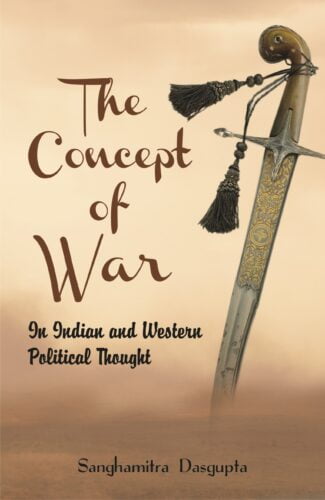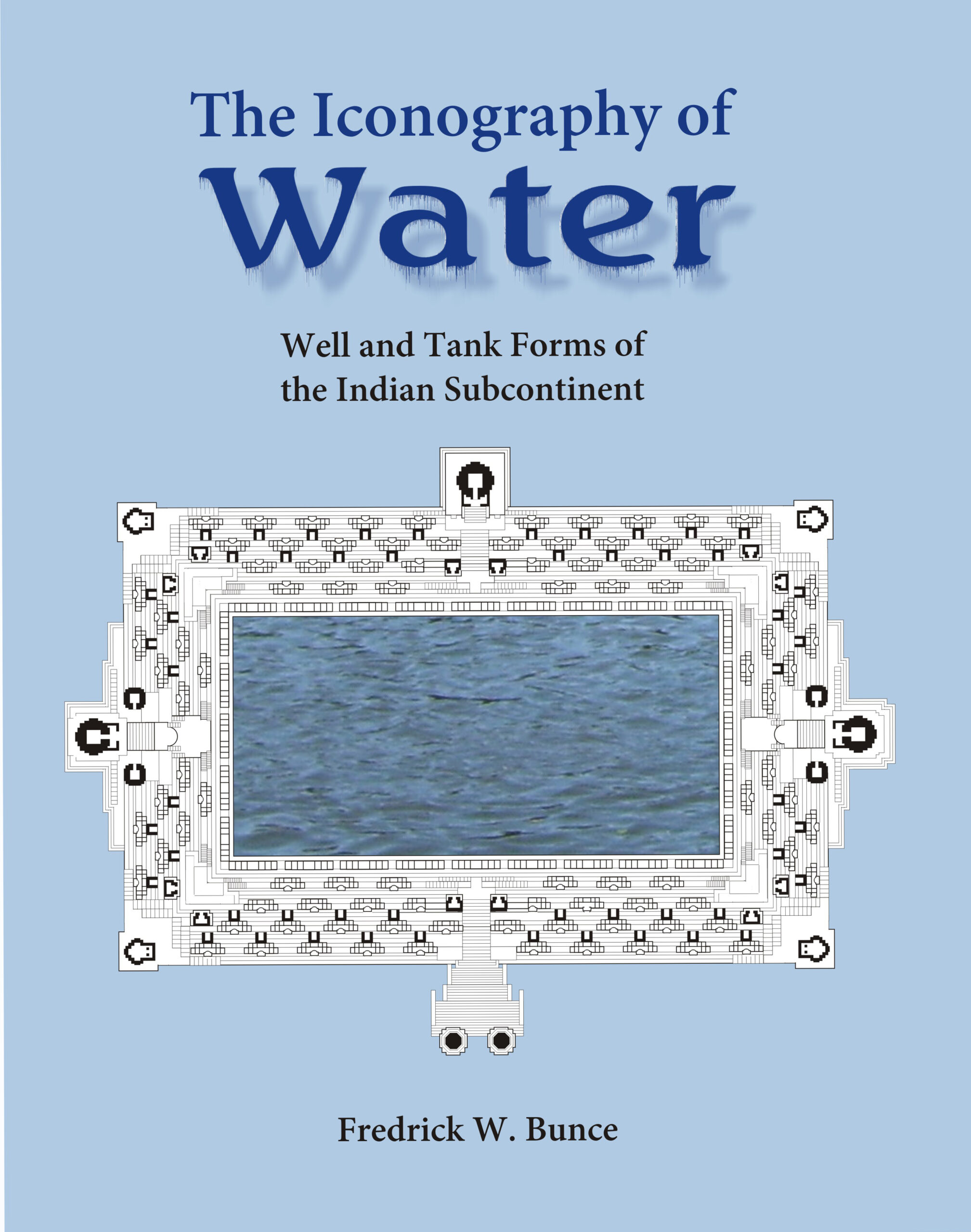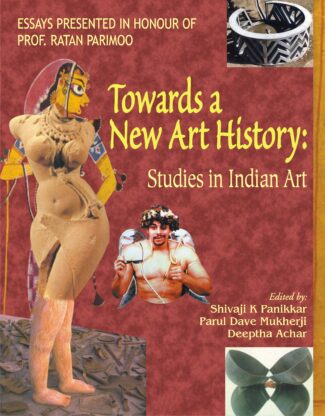Showing 181–190 of 192 results

The book explains the nature of war, its socio-economic and political aspects from the Vedic and Western perspectives, and how the moral and social ethical concepts are related pragmatically to the issue of war. The author echoes serious concerns about the ways by which the present-day global majors approach war.
War makes life miserable for both the parties involved, the invader and the invaded. No war is fought without losing men and material, stripping off societal life and political order. Simultaneously it contributes to the progress of the society and preserves the liberty and honour of a state. From the Vedic period of India and the epic period of Greece, we have records of wars, and deliberations on the logic, philosophy, politics, ethics, strategies (pre- and post-war) of war, and the ways of reconstructing the war-ravaged societies, paving the way for drastic social and economic changes.
This volume scans the Indian and Western views and approaches on war in the ancient and modern times. To understand the concept of war in ancient period, it analyses Rigveda, Manusmriti, Ramayana, Mahabharata and Arthasastra from the Indian parlance and the philosophies of Plato and Aristotle from the Western perspectives. It also makes an in-depth study on the war philosophies of modern Indian leaders like Mahatma Gandhi, Sri Aurobindo, Vinayak Damodar Savarkar and S. Radhakrishnan, and Western philosophers like John Locke, Immanuel Kant, Georg Friedrich Hegel and Bertrand Russell.
The book also explains the nature of war, its socio-economic and political aspects, and how the moral and social ethical concepts are related pragmatically to the issue of war. The author echoes serious concerns about the ways by which the present-day global majors approach war.

Baolis, bawadis, keres, kulams, kundas, talaos, tankas, wavs, zings were a neglected lot in the oeuvres of Indian architects and art. This volume, devoted to their study, is heavily loaded with the design of various structures and other vital information. Every detail is assiduously analysed, compared and rechecked to present the dimensions, proportions and relationships of each of these structures.
While numerous Indian monuments are well known in the annals of architectural research and excavation, a category of monuments baoli, bawadi, kere, kulam, kunda, talao, tanka, wav and zing was neglected in the oeuvres of architects and art. A few are familiar with the splendid beauty of the Surya Tank, Modhera; the vertiginous Canda Baoli, Abhaneri; the incomparable Rani-ki Wav, Patan; the magnificent Kalyani Tank, Hulikere; and the beautiful Rudabai-ni Wav, Adalaj. Thousands of such monuments are excellent in architectural beauty and design, apparently based on their primary utility drinking, bathing, religious purification and ornamental (recreation).
Water plays a quintessential role in the life of man. Its harvesting, preservation and careful use are of paramount importance, especially in those regions where rains are scanty. Thus took place the construction of these artificial water bodies. Many of them are within the precincts of temples and mosques, built in a time span of seventh to twentieth century ce.
This volume, devoted to the study of water monuments, is heavily loaded with the design of various structures and other vital information. Every detail in this book is assiduously analysed, compared and rechecked to present the dimensions, proportions and relationships of each of the various elements of the structures. Thus it unravels a number of keys by which others can unlock the mysteries and beauties of these neglected monuments.
It can be a precious collection for architects, historians, researchers and anyone who loves water bodies.

The essays here, challenging the boundaries and assumptions of mainstream art history, question many preconceived notions about meaning in representations artistic and art historical. Emphasizing on specific visual cultures within the dynamics of historical processes, they raise critical issues of art production, circulation and consumption and attempt to rescue traditional arts from a past that is hermetically sealed off from the present.
Mainstream art historical writing on Indian art has remained focused on identifying and defining stylistic schools, understanding evolutionary patterns and regional styles as well as understanding iconographic and narrative conventions and structures. The wide-ranging essays in this volume challenge the boundaries and assumptions of mainstream art history. Moving away from an art history structured by an art object-centered approach, this book gestures at a framework-oriented approach that calls attention to the political, social, economic structures that undergird art. It is an attempt to reformulate the discipline in a manner that can explain the field of the visual in a way that goes well beyond the explanatory capacity of conventional modes of studying Indian art. These essays question preconceived notions about meaning in representations artistic and art historical. They contest earlier claims about the objectivity of scholarship in general and history writing in particular as much as they critique the valorization of a purely individuated, subjective art criticism. In its attempt to historicize the practice of art, the book examines the economic, political and social implications of art that enable the re-situation of Art History among social science disciplines. The emphasis is on the study of specific visual cultures within the dynamics of historical processes. These essays raise critical issues of art production, circulation and consumption as well as production of meaning. Traditional arts have been studied from a critical perspective that extricates them from a past that is hermetically sealed off from the present. The opposition of High Art and non-art (read popular or mass visual culture) has been challenged. Breaking outside the ambit of high art, studies in the book extend from popular, mass-produced art to MTV imagery to digital art.

The book gives account of the Vaishnavite temples of Kanci, providing numerous pictures with the structural, architectural and sculptural aspects of the temples. It also throws light on the historical, religious, social and cultural values of the temples.
Kancipuram was the important capital of north Tamil Nadu for a long period — from the first-second century ce to the end of the seventeenth century. It was a beautiful city laid out in the form of a lotus, according to the poem Perumbanarrupadai. It was admired by the world as a place famous for its festivals and noted for its temples. Through the ages, it has been the abode of many religious leaders who devoted their lives to the religious uplift of the people.
This well-illustrated work presents a history of the Vaishnavite temples of Kanci, focusing on the history of the ancient temples from the Sangam Age onwards, the many legends, myths and other accounts that refer to it, and its location and building. It provides a detailed account of some major temples of the city supported by numerous pictures of the temples that cover various aspects of each — the entrance and other parts of each temple structure, its architecture, and its artistic engravings particularly its sculptural beauty. It delves into the Vaishnava tradition for concepts and ideas underlying the construction of the sanctum and the sub-shrines, and portrayal of divine forms on the walls, pillars and other parts of the temple. There is a detailed study of the sculptures in the main walls of the temples and the main deities in the shrines. It also examines the many inscriptions found in the temples to offer insights into the historical, religious, social and cultural value of the temples.
The volume is bound to interest a host of readers, particularly scholars and students of Indology involved in the study of the cultural traditions of south India and its religious art and architecture.

It mainly tries to postulate an alternative explanation to the vratya-phenomenon correlated with the heterodox facets of Indian sovereignty. Thus, the work consistently offers a new historical interpretation of the rise of the so-called orthodox Brahmanic (Shrauta-) culture that is understood as a reform.
This volume stems from the three-year Research Project Traces of a Heterodox Concept of Kingship in Ancient, Medieval and Modern India financed by the Regione Autonoma della Sardegna, developed by Cristina Bignami, Danila Cinellu, Ewa Debicka-Borek, Moreno Dore, Elena Mucciarelli, Chiara Neri and coordinated by Tiziana Pontillo. It mainly tries to postulate an alternative explanation to the vratya-phenomenon correlated with the heterodox facets of Indian sovereignty. Thus, the work consistently offers a new historical interpretation of the rise of the so-called orthodox Brahmanic (Shrauta-) culture that is understood as a reform. Moreover, it resorts to a large collection of ancient, medieval, and modern texts and documents, interpreted by means of philological and anthropological tools. In this manner, the Vratya problem is launched onto a interdisciplinary platform, in order to profit from a broad scenario as far as this issue is concerned.
The first section focuses on the vratya culture, as it can be reconstructed from old (and middle) Indo-Aryan generally marginalized sources, and from medieval and modern documents where this culture seems to have left some traces. The second section seeks to substantiate the polar opposition between orthodox and heterodox sovereignty, of which vratyas appear to be a capital example.

It is a comprehensive study of the defence policies, construction of forts, arms and ammunitions, commissariat, the espionage system, the rules of aggression and defence, the technical matters and war ethics, based upon a comparative study with the modern systems, and a thorough comprehension of Sanskrit, Sanskrit sources, and works like Silappadikaram, and Kural.
Differing from the existing studies on the warfare of ancient India; Warfare in Ancient India: In Historical Outline is a comprehensive study of the defence policies, construction of forts, arms and ammunitions, commissariat, the espionage system, the rules of aggression and defence, the technical matters and war ethics, based upon a thorough comprehension of Sanskrit and Sanskritic sources. This being done based on the existing and newly-explored sources. It also analyses the diplomatic and economic factors in aggressive designs, one of the major elements of the political history of early India.
This volume partially deals with the activities of the Indo-Aryans and their continuous struggle for survival against hostile environment in Indus Valley and their expansion towards the east along the major rivers of north India, leading to frequent invasions and attacks. Thus came the warlike traits of some major Vedic deities, ancient battles, arms and armour, chariots, forts, arrays, Jain war canons, and major weapons cited in the Mahabharata, Silappadikaram, Manasollasa, Kural, etc. as the main focus of the book. It also vividly addresses the war policies and tactics enunciated by Kautilya in Arthasastra and Manu in Manu-Smriti, and differentiations in their views on few aspects. The inevitable factors that led to wars survival, and domination and economic exploitation are also well dealt.
The book should enthuse the interests and spirit of all those who are into the study and research of history, warfare and ancient Indian culture mainly from the Vedic viewpoint.
डा. हरीसिंह गौर ने एक गरीब परिवार से उठकर अपने परिश्रम, बुद्धिमानी, लगनशीलता, धैर्य, आत्म-विश्वास एवं दृढ़ निश्चय जैसे गुणों के बल पर कैम्ब्रिज युनिवर्सिटी जैसे उस समय के उत्कृष्ट शिक्षा संस्थान से शिक्षा प्राप्त की। निरन्तर प्रगति करते हुये अपने समय के बुद्धिजीवों की प्रथम पंक्ति में आ गये। अपनी सृजनात्मक क्षमता का उपयोग करते हुये साहित्य के क्षेत्र में उत्कृष्ट कवितायें एवं निबंध लिखे, कानून के क्षेत्र में उच्च कोटि के प्रख्यात ग्रन्थ लिखे एवं धर्म के क्षेत्र में ‘स्प्रिट आॅफ बुद्धिज्म’ जैसी श्रेष्ठ पुस्तक लिखी। वे उच्च कोटि के विधिवेत्ता थे, उस दौर में वकालात करते हुये सफलता के नये कीर्तिमान स्थापित किये। कुशल राजनीतिज्ञ की भूमिका निभाते हुये विधान परिषद् में समाज सुधार एवं महिलाओं की स्वतंत्रता विषयक अधिनियम पारित कराये। संस्थापक वाइस चांसलर के रूप में कुशल प्रशासक एवं प्रबुद्ध शिक्षाशास्त्री होने का परिचय देते हुए दिल्ली विश्वविद्यालय को संगठित किया। अपने जीवनभर की कमाई का सदुपयोग विद्यादान में करते हुये सागर विश्वविद्यालय की स्थापना की और महादानी कहलाये।
डा. गौर का सम्पूर्ण जीवन अनुकरणीय है। पुस्तक को सहज, सरल एवं बोधगम्य शैली में लिखकर यथासंभव प्रेरणास्पद बनाने का प्रयास किया गया है। छात्र, शोधार्थी एवं आम पाठक इसे पढ़कर डा. गौर के जीवन से प्रेरणा लेकर अपने व्यक्तित्व का विकास करते हुये अपने जीवन एवं कर्मक्षेत्र में सफलता प्राप्त करें, इसी आशा से पुस्तक लिखी गई है। पुस्तक इतनी रोचक एवं ज्ञानवर्द्धक है कि इसे पढ़कर आप अपने आपको धन्य महसूस करेंगे।
| There are no products |